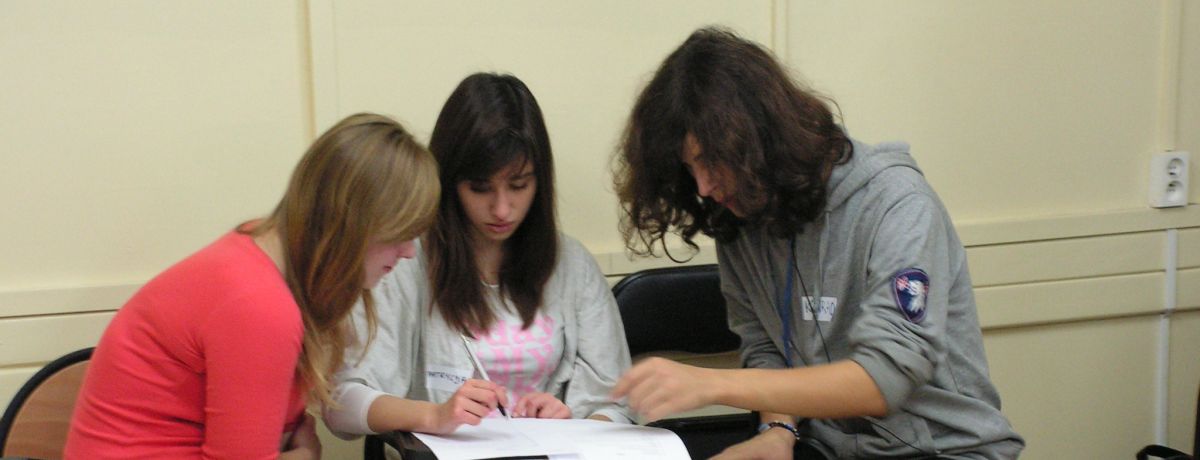| 2011 |
Otwock
Konstanty I. Gałczyński High School


| 2011 |
“We wanted to visit that Otwock so much – we imagined it as a picturesque town, full of wooden houses and Jewish history. Enthusiastically we opened the walking guide “Warsaw in 1930s’”. And it was a major disappointment. We realized that the city does not care about its historic monuments, Jewish tradition, even elementary spatial order. Doesn’t matter that there was a family house of Calel Perechodnik, that there was the synagogue designed by the same architect who designed the Prudential building in Warsaw, that the founder of Polish microbiology lived here, that one of the most precious monuments of wooden architecture in Poland is here. Why care about it, why be proud of it? What does it matter at all?” – we read in the blog of Agnieszka Kowalska, a journalist from Gazeta Wyborcza in a bitter article entitled “The sadness of Otwock”.
It does matter for the students of the High School No 1 in Otwock. During the School of Dialogue workshops the students learnt a lot about Jewish religion, culture and history and, more importantly, they discovered their local Jewish heritage by themselves. Sometimes for the first time in their lives they went to places connected with old Jewish community of Otwock, a formative experience for many.
They were very interested to read about their town and its history, which started in the middle of the 19th century, when the unique microclimate of Otwock prompted its development as a health resort. At the end of that century a summer settlement was formed closed to a railway station, called then Otwock Stacyjny (Station Otwock), then Otwock Uzdrowiskowy (Resort Otwock). In 1895 the first Jewish sanatorium opened in still existing buildings at 5 Warszawska Street. The town on expanded: the city hall was build, a fire station, a stadium, a casino, a grammar school and a few general schools. Otwock was a popular resort among Warsaw Jews, who made up ¾ of the visitors there. The Jewish Otwock was divided into two parts – the villa/resort part on the left of the railway tracks, where the rich, assimilated Jews lived, and the surroundings of the market square, where the poor Jews lived in their wooden cottages. In 1939 Jews numbered 75% of all citizens of Otwock, owning 80% shops there. In 1939 the Germans torched Jewish synagogues and in November 1940 created the ghetto, where 12 thousand Jews were placed. 19 August 1942 the Germans started liquidation of the ghetto, few Jews survived it thanks to help from their Polish neighbours.
Preparing the route for a walking tour in the footsteps of Otwock Jews, the students used documents from their school library and the book “Spowiedź” by Calel Perechodnik (“Confession”, English translation by Frank Fox entitled “Am I a Murderer?”). The recipients of the students’ project were mostly their colleagues.
In December, a group of students went for a walk visiting places connected with lives of Otwock Jews – the abandoned mental hospital, built in 1908 as Jewish Hospital for the Mentally and Psychically Ill. During the Second World War the Nazis executed all the patients there. “Even yesterday, I thought of it merely as of an unimportant, ruined hospital for mentally-sick people. While the colleague was reading what happened to the Jews that had been staying here, we were all petrified”. – recalled one of the project participants. Then the students visited a commemorative boulder in Reymonta Street, reminding about the tragic end of Otwock Jews in August 1942.
The next step was Warszawska Street, where the borders of the ghetto were shown, and then the former railway siding from which Jews were transported to Treblinka. Old photos from the period were shown there. Then the walk continued to Górna Street, where the synagogue and the mikvah used to be. The synagogue was rebuilt after the war into the city baths, then into a residential building. Currently all that remains is a plaque on the wall of a shopping mall built there. The final stop was the Jewish cemetery in Hrabiego Street, founded in the 19th century and heavily damaged by the Germans during the war. Still, around 900 tombstones survived.
The students said that the workshops sparkled their thoughts about difficult relations between Poles and Jews, incited them to deepen their knowledge and made them interested in the local Jewish heritage.
Honestly speaking, it encouraged me to read a book on relations between Poles and Jews, as this topic had in fact been intriguing to me for long. I am wondering why gradual hostility, stereotypes and anti-Semitism arose between our nations. As part of the workshops run by the School of Dialogue we discussed such issues.
Łukasz, workshops participant

School:
K. I. Gałczyński High School
Students:
1st year students
Teacher:
Katarzyna Kałuszko
Expert:
Jadwiga Rakowska
Educators:
Łukasz Cudny, Ewa Stokłuska
School of Dialogue program in Otwock was made possible by the support from SUSAN and MARK SISISKY.
In appreciation to Friends of the Forum for supporting the School of Dialogue educational program.
